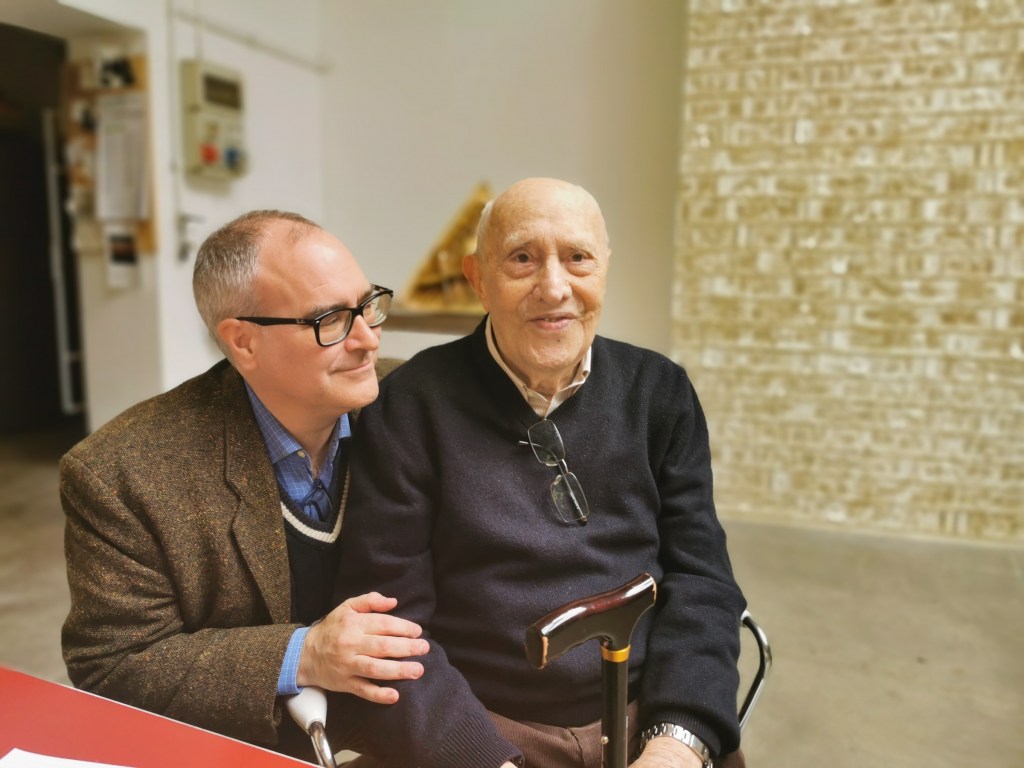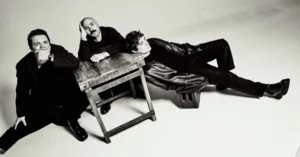Remembering Arnaldo Pomodoro, Who Uncovered Worlds Within Sculptures


This Monday morning, June 23, I received the news of the death of my friend Arnaldo Pomodoro the night before, only a few hours before his 99th birthday. I had known him for almost 20 years and had often visited him at his Milan studio, a vast former industrial space between Via Vigevano and the Naviglio Grande, or Grand Canal.
As he grew older and more fragile, the noise and activity of the foundry and the workshop began to fall silent, but I remember the constant activity of Arnaldo himself, always curious, always carving away at a shiny surface to reveal the dark mechanical mechanisms within. His offices carefully preserved all his drawings in huge drawers. He would rush off around a corner and down the stairs, and I would find him browsing through some old notebook of his, which had explored an idea that had returned to provoke him.
Arnaldo was born in 1926 in east-central Italy, in the Marche region. He began his career on the Adriatic coast at the Pesaro Public Works office, which at that time, in 1953, was primarily concerned with reconstructing municipal buildings damaged or destroyed in the war. But Arnaldo was drawn to art, and in particular to sculpture, because as he often told me, “I was attracted to material, which I needed to touch and transform.” He moved to Milan and met Lucio Fontana, whose friendship encouraged and stimulated him. In 1954, he and his brother Gio were invited to display their small pieces at the Milan Triennial Exhibition, a significant step toward visibility.

Always drawn to the United States, Arnaldo made his first visit there in 1959. “I was born as a sculptor in the Brancusi room at MoMA,” he said in an interview. “It was here that I had a sort of insight … while observing the sculptures, I saw them worm-eaten and corroded, and I had the idea of placing all my signs inside the geometric solids, inside Brancusi’s abstract images.”
In California, he met Mark Rothko, and in New York, he met all the important artists of the moment: Barnett Newman, Jasper Johns, Andy Warhol. He was open to the possibilities of art on a huge scale, beginning from that seminal trip to the US. He returned many times to teach at various institutions there. He found the ferment of the 1960s an opportunity to delve into the perfection of geometric forms and discover the vitality inside them. His first major work, the “Sfera grande,” was created for the 1967 Expo in Montreal, but is now permanently displayed outside the Italian Foreign Ministry, a metaphor of the restlessness and contradictions of Italian society and the need to overcome them.
He made other spheres — one for the Courtyard of the Pinecone in the Vatican Museums (1979-1980), donated to the Vatican in 1990), whose four-meter (13-foot) diameter matched the arches built almost 500 years before by Bramante surrounding the courtyard; and the famous “Sfera con sfera” (1996) outside the United Nations building in New York.

But Arnaldo’s creativity burst out in all directions. He designed a never-built but influential cemetery for the city of Urbino in 1973 that involved carving transverse crevasses into a hill outside the city to create a real necropolis, with tombs cut into the sides. His extraordinary work for the cantina of the Tenuta Castelbuono winery in Umbria, “Carapace” (2005–12), rises like a giant insect shell over the hill of the vineyards, and underneath it, on several levels, are all the spaces needed for the maturing and tasting of the wine. He was also a tireless scenographer for the theater, designing sets that provoked applause as soon as the curtain went up at La Scala, before a note was sung. His most famous sets were for outdoor performances of the Oresteia in Gibillina in Sicily (1983), in which his obsession with glyphs and the breakdown of perfect forms perfectly suited the tragedies of Aeschylus.
In his last years, having outlived most of his old friends and lovers, he was increasingly melancholy. The state of the world worried him; he became pessimistic. The devastation of Gaza and then the bombing of Iraq affected him deeply. I think he died of a broken heart. I will miss him always.





